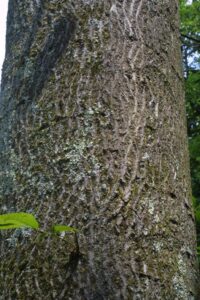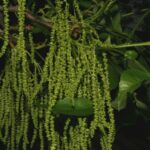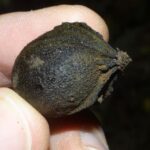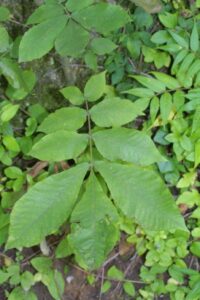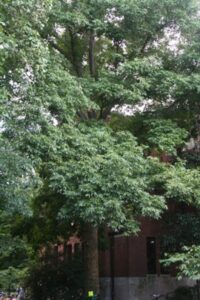Botanical Name:
Carya cordiformis
Family Name:
Juglandaceae / Walnut
Description:
The Bitternut is a large tree that can live up to 200 years. The hard wood is used in the furniture industry and it produces non-edible nuts. The hickory drops debris from its fruit from the late summer throughout autumn making fall cleanup in urban areas more challenging.
Size:
50-70′
Habitat and Range:
The bitternut hickory is abundant and can be found across much of the eastern and midwestern United States. Found in rich, moist woods, the bitternut can tolerate shade in its youth, but needs full sun at maturity.
Attributes:
The bitternut hickory is a medium tree with a long, clear trunk and leaves composed of 7-9 elliptical leaflets. In the spring, the tree produces long catkins that allow it to be pollinated by wind. In the fall, leaves turn a gorgeous yellow and solitary or paired globe-shaped nuts form.
Wildlife Value:
Rabbits, beavers, rodents, and small mammals occasionally feed on the bark of hickory species. While the hickory seeds are too bitter for human consumption, they are eaten by many animals. Some of the most spectacular and colorful moths such as the luna moth, the regal moth, and several underwing moths require hickory leaves as food.
Did you Know?
• The foliage of the bitternut hickory has a high calcium content and is near the top of the list for soil-improving species.
• The wood of the bitternut hickory is shock resistant and has been used to make handles for striking tools.
• Hickory is a highly prized fuel for making hickory-smoked meats and is also used for barbecue charcoal.
Benefits to Our Community (based on carbon dioxide sequestered, storm water runoff avoided, and air pollution removed each year):
Over the next 15 years, this tree will give back $2,700 worth of benefits to our community.
